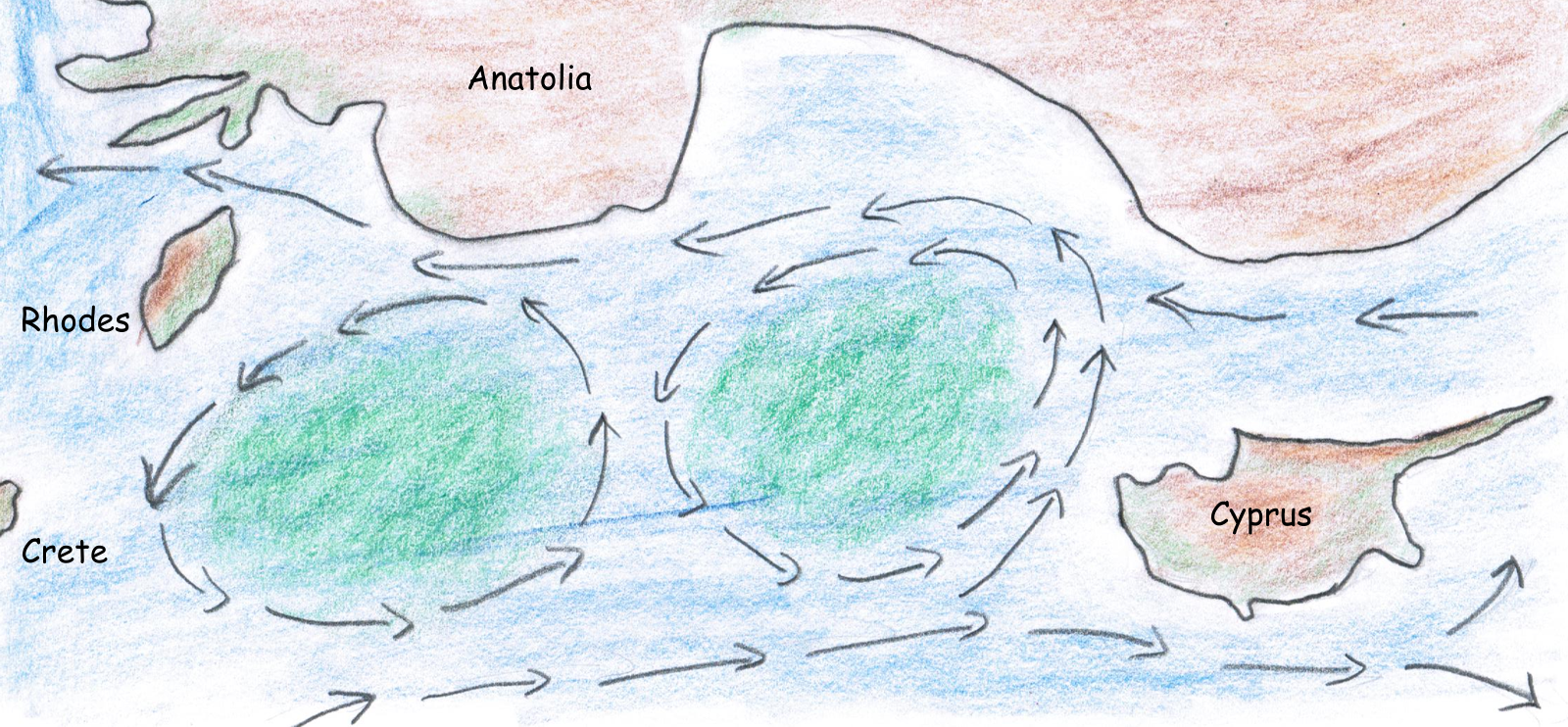
Are ocean eddies habitats of their own?
Eddies of 100 to 300 km diameter are wide-spread in the oceans and may provide important habitats for marine organisms. Cyclonic eddies (anticlockwise rotation in the Northern Hemisphere) rotate around a core of upwelling, nutrient-rich, cold water. The productivity of such eddies and their suitability to provide food for larger marine organisms is by and large determined by their ability to retain planctonic particles. Scientists from Australia have quantified this ability of ocean eddies by applying hydrodynamic models to data generated by particle-seeding experiments.
While there was a high variation of particle retention time (5-67 days), no correlation to eddy size or latitude was observed. Measured retention times were comparatively long in relation to planctonic life cycles supporting the conclusion that eddies provide important habitats for planctonic organisms.
Upwelling and downwelling eddies differed in their retention times in different depths, with particularly long retention times in deep layers of upwelling eddies and in surface layers of downwelling eddies. According to the authors, this should lead to differences in plancton communities in up- and downwelling eddies. Upwelling eddies should favour slowly sinking organisms like diatoms, while downwelling eddies should favour organisms able to move upwards (like flagellates of dinoflagellates). Shifts in eddy occurrence or orientation may therefore correspond to shifts in the spectrum of oceanic plancton.
Source: Condie S. and Condie R., Global Ecol. Biogeogr. 25, 1264–1277